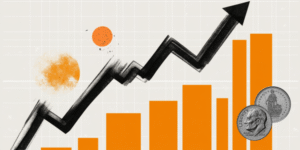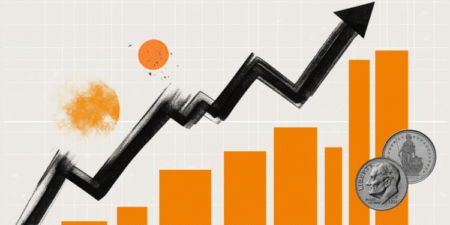- Gold price steadies after edging down on Tuesday as US President Trump signed an executive order to ease tariffs on cars.
- Traders brace for key US economic data, with the US GDP high on the agenda as it coould hint at the impact of tariff policy.
- Technically, both daily resistances and supports for Gold are narrowing, signaling the increasing chances of a breakout.
Gold price (XAU/USD) continues to trade in a narrow range around $3,300 on Wednesday as traders await key US economic data, which could become the catalyst for an imminent breakout. Bullion is facing a second day of some profit taking after United States (US) President Donald Trump signed an executive order to ease tariffs on car parts, as the President pointed out the progress in trade negotiations, Bloomberg reported. With more signs that trade tensions are diminishing, the Gold rally looks to be fading.
On the economic calendar, all eyes shift to the preliminary reading for the US Gross Domestic Product (GDP) for the first quarter. This is one of the key data points the Federal Reserve could look at when deciding what to do on May 7 regarding interest rates. That same Fed and its chairman, Jerome Powell, got called out again by Trump overnight, saying he knows far more about interest rates than Powell and that he is not doing a good job, Bloomberg reported.
Daily digest market movers: Shift to top-tier US data
- Investors rattled by the growing global trade war flocked to gold-backed exchange-traded funds in the first quarter, with inflows propelling bullion’s 19% rally in the three-month period, according to the World Gold Council. Investors added about 227 tons of bullion to Gold ETFs in the first quarter, the most since 2022, helping prices to increase to fresh record highs, Reuters reports.
- Indian jewelry sales slumped in March compared to the same month last year, and are expected to decline by up to 11% during the fiscal year through March 2026, Bloomberg reports.
- At 12:30 GMT, the preliminary reading of the first quarter for US Gross Domestic Product is to be released. Economists expect the US economy to have grown by a modest annualized rate of 0.4%, much slower than the 2.4% expansion seen in 2024’s fourth quarter.
- The monthly PCE data for March will also be released. The Monthly Core PCE is expected to come in at 0.1%, down from 0.4%. The monthly headline number is expected to fall to 0%, from 0.3% previously.
Gold Price Technical Analysis: Breakout nearing
With the reprieve in tariff stress following Trump’s easing some auto tariffs, odds for a breakout to the downside in the Bullion looks likely. However, the US data could play a crucial role here, for example in case the US GDP numbers show a contraction. Should Trump have a change of heart again and issue more surprise tariffs for example, a boost in Gold would be inevitable.
The daily Pivot Point at $3,322 is the first level that needs to be reclaimed on the upside. From there, the next level to watch out for on the upside is $3,344, the R1 resistance. The R2 resistance at $3,370 is for now the guard keeper on the upside to try and reject Gold price to re-enter above $3,400.
On the downside, the S1 support is providing a cushion at $3,295. Further down, the technical pivotal floor near $3,245 (April 11 high) comes into play.
XAU/USD: Daily Chart
Gold FAQs
Gold has played a key role in human’s history as it has been widely used as a store of value and medium of exchange. Currently, apart from its shine and usage for jewelry, the precious metal is widely seen as a safe-haven asset, meaning that it is considered a good investment during turbulent times. Gold is also widely seen as a hedge against inflation and against depreciating currencies as it doesn’t rely on any specific issuer or government.
Central banks are the biggest Gold holders. In their aim to support their currencies in turbulent times, central banks tend to diversify their reserves and buy Gold to improve the perceived strength of the economy and the currency. High Gold reserves can be a source of trust for a country’s solvency. Central banks added 1,136 tonnes of Gold worth around $70 billion to their reserves in 2022, according to data from the World Gold Council. This is the highest yearly purchase since records began. Central banks from emerging economies such as China, India and Turkey are quickly increasing their Gold reserves.
Gold has an inverse correlation with the US Dollar and US Treasuries, which are both major reserve and safe-haven assets. When the Dollar depreciates, Gold tends to rise, enabling investors and central banks to diversify their assets in turbulent times. Gold is also inversely correlated with risk assets. A rally in the stock market tends to weaken Gold price, while sell-offs in riskier markets tend to favor the precious metal.
The price can move due to a wide range of factors. Geopolitical instability or fears of a deep recession can quickly make Gold price escalate due to its safe-haven status. As a yield-less asset, Gold tends to rise with lower interest rates, while higher cost of money usually weighs down on the yellow metal. Still, most moves depend on how the US Dollar (USD) behaves as the asset is priced in dollars (XAU/USD). A strong Dollar tends to keep the price of Gold controlled, whereas a weaker Dollar is likely to push Gold prices up.
Read the full article here
















